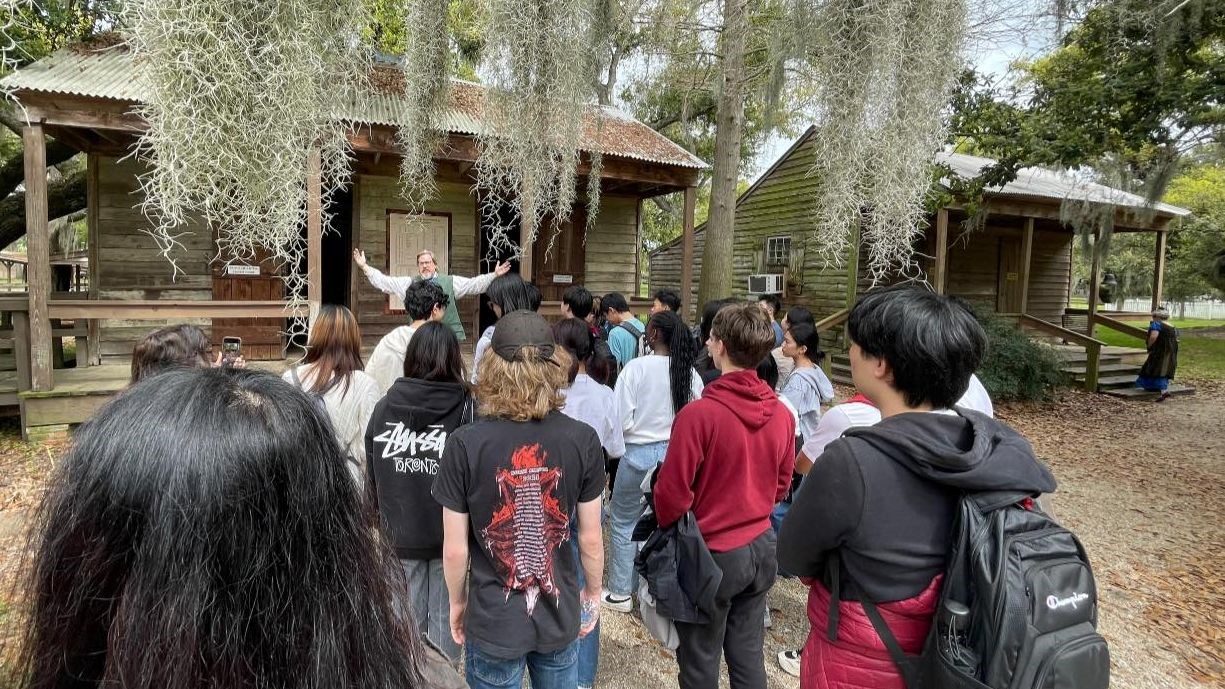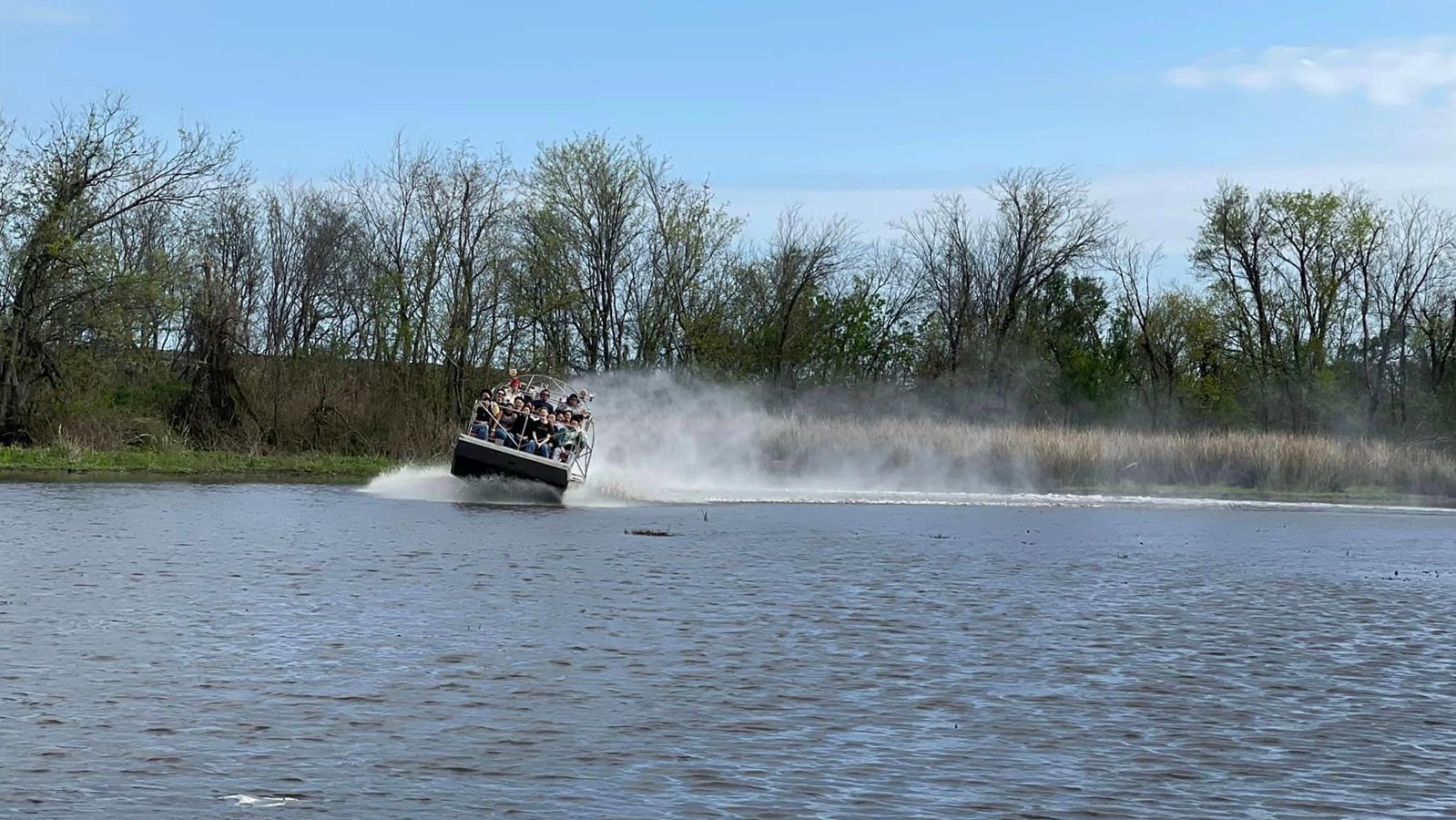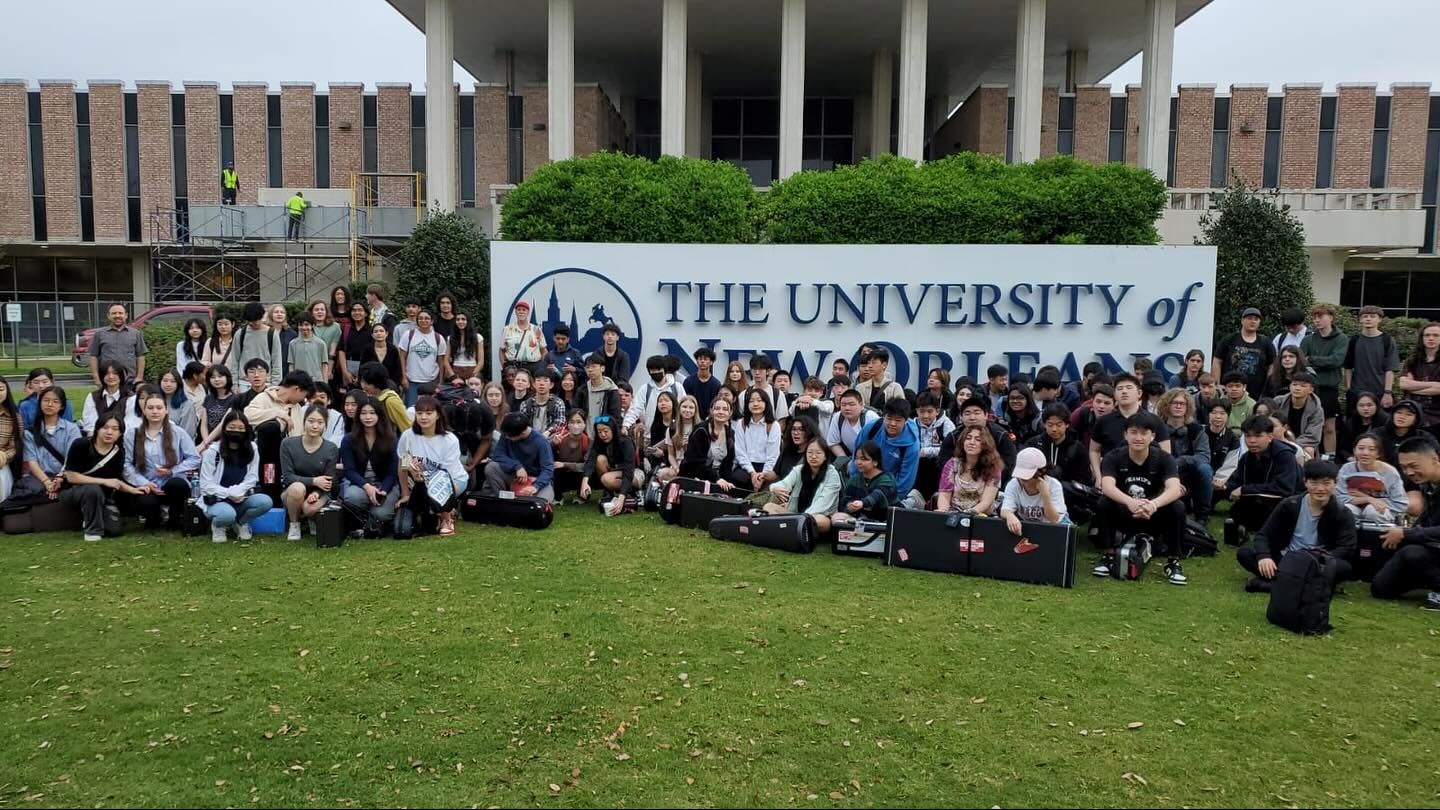Semiahmoo Secondary music students explore history of jazz & race in New Orleans
 Semiahmoo Secondary music students recently visited New Orleans to learn about the history of jazz and how it was borne out of the social issues of slavery, segregation and racial injustice in the late 1800s and early 1900s. Over the course of five days, the students visited a plantation to learn about slavery, participated in music workshops at the University of New Orleans, went on riverboat and swamp tours, and performed live throughout the French Quarter.
Semiahmoo Secondary music students recently visited New Orleans to learn about the history of jazz and how it was borne out of the social issues of slavery, segregation and racial injustice in the late 1800s and early 1900s. Over the course of five days, the students visited a plantation to learn about slavery, participated in music workshops at the University of New Orleans, went on riverboat and swamp tours, and performed live throughout the French Quarter.
When it comes to mapping out American music history, New Orleans has to be one of the first stops on the tour. But as Grade 10-12 band students from Semiahmoo Secondary found out, the city’s reputation as a diverse musical melting pot stems from a complex past of racial injustice and discrimination that inspired the sound of jazz as we know it today.
Recently, the school’s senior concert band and four senior jazz bands embarked on a whirlwind five-day trip to the birthplace of jazz, learning about the genre’s history and influence. In past years, band students have visited New Orleans, New York and Cuba to hear firsthand about different genres of music, but this most recent trip tied in jazz’s roots in African-American communities in the late 19th century and early 20th century, as well as the social issues of slavery and racial segregation at the time.
“I was trying to connect some of the things we were hearing in the news about racial inequality and Black Lives Matter, and fitting that into music, especially teaching jazz because Black Lives Matter and jazz and slavery and blues all kind of fit together,” said Dagan Lowe, head of the music department at Semiahmoo Secondary. “In my teaching, I connect the musician’s life experiences to their music, how it inspired the songs they wrote, and it was really a neat opportunity to teach students about that.”
Over the course of the trip, students went on numerous educational tours, learning about the slaves who worked on plantations under French and British colonies, as well as how they channelled their experiences into folk songs that were vital to the origins of jazz. Lowe said hearing about racial history in the Deep South was eye-opening for many students as they connected the dots between race and music.
“We learned about places like Congo Square, which was where African drumming happened and African slaves could trade and play their own music,” said Lowe. “It was very different from other parts of the United States where more than two slaves weren’t allowed to be together. It’s one of the most historically significant places for jazz.
“We went to Preservation Hall, the most famous jazz club in New Orleans for history, and heard an early Dixieland-type band play. That building is very important to the preservation of the French Quarter. They learned a lot and really had a great time listening to the professional musicians.”
Students also saw life on the bayou on a swamp tour, and went up and down the Mississippi River on a paddlewheeler, reminiscent of the type that jazz legend Louis Armstrong performed on in his early career with riverboat brass bands.
The trip presented numerous opportunities for students to play their instruments. The bands participated in workshops with musicians at the University of New Orleans and held performances in Jackson Square and outside the New Orleans Jazz Museum, but their musical output wasn’t limited to a few shows.
“When students had downtime, many of them grabbed their instruments and went busking in the French Quarter,” said Lowe. “Everywhere you go, there’s live music, there’s a brass band or a guitar player or someone’s tap dancing – it’s just everywhere and it was really exciting for students to go out and play some of the music they’ve learned that is from New Orleans.”
Despite a very full and sometimes exhausting itinerary, Lowe said he’s very proud of the students for remaining thoroughly engaged in the educational opportunities, taking in everything they could about music and race in America.
“They really represented our district, our school, our music program incredibly well,” he said. “Trips like these are an amazing way to experience Social Studies and this is something that is going to last forever, they’re going to remember it.”










